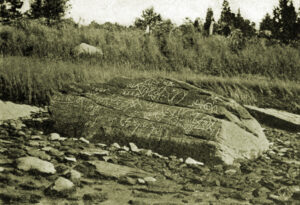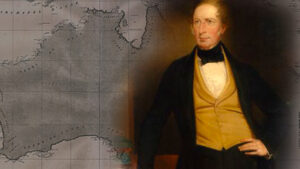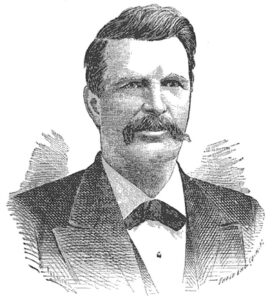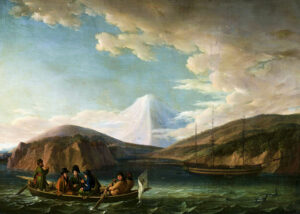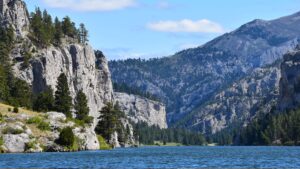The mutiny on HMS Bounty overshadowed an even stranger disappearance in the Pacific. Two French ships, led by explorer (and Captain James Cook super-fan) Jean Francois de Galaup Comte de Laperouse, vanished in the Pacific Ocean. Francois de Galaup, known as La Perouse, and the 220 people on board were never seen again.
Background
During the 16th century, France became a formidable colonial power with colonies in the Caribbean, North America, India, and Africa. However, by the turn of the 18th century, the French empire was under threat. England and Spain had become the world’s dominant maritime powers.
King Louis XVI, the last king of France before the 1789 revolution, wished to reestablish France as a leader in science and trade. He commissioned an expedition to seek new passages, new lands to map, and new resources. Perhaps success could even help quell domestic troubles in France. Louis XVI held out hope for the expedition until the day he was executed.
“Any news of La Perouse?” were among his final words before the guillotine.

Portrait of Le Perouse. Photo: Fine Arts Museums of San Francisco
Who was La Perouse?
La Perouse was a naval officer with an impressive resume. He joined the Navy at just 15 and worked his way up the ladder. He first gained the attention of Louis XVI during the Anglo-French War of 1778, leading a campaign against the British in Hudson Bay.
However, La Perouse dreamed of equaling his role model, Captain James Cook. So, when Louis XVI wished to put together a scientific expedition, La Perouse fit the bill. He was a good navigator and steady leader.
The expedition
La Perouse set off from Brest in the summer of 1785 with 220 men and two ships, L’Astrolabe and La Boussole. Among the crew were esteemed academics from several disciplines, including mathematics, astronomy, geology, and botany. In a twist of fate, the expedition even caught the attention of a young Napoleon Bonaparte. However, his application was rejected.

Vanikoro Island in the Pacific. Photo: Shutterstock
The voyage visited Chile, Easter Island, Alaska, California, the Sandwich Islands, Samoa, Korea, Japan, Tonga, Russia, and Australia. Along the way, they drew up maps and met with natives. La Perouse had a habit of giving out French medals as souvenirs. However, the expedition suffered its fair share of misfortune, ranging from strong currents and gale-force storms to attacks from natives. Twenty of the crew died and many more were wounded en route to Australia.
Le Perouse had promised to be back in France by June 1789, but the entire expedition disappeared after leaving Botany Bay in New South Wales on March 10, 1788.
The search
Le Perouse sent some letters and charts back to Europe with a British ship, and these laid out the expedition’s planned itinerary after leaving Australia. Le Perouse would head first to New Caledonia, then onto the New Hebrides, the Louisades, and the Solomons. Finally, he’d explore the coast of New Holland (Australia) “as far as Diemen’s Land.”
But there was no further news and concern in France grew. However, the French Revolution delayed an official search. Finally, a two-ship search party set out in 1791, led by Rear Admiral Bruni d’Entrecasteaux. They followed Le Perouse’s planned route, including through the Solomon Islands, but did not explore their interiors. Only two months after arriving in the islands, d’Entrecasteaux died, hamstringing the rest of the search.
There was no further progress until 1825 when a ship passing through the Solomon Islands encountered natives with French medals and swords. A local chief explained that they got them from a ship that had wrecked on Vanikoro Island years earlier.
In 1827, Irish captain Peter Dillon visited Vanikoro Island hoping to finally solve the mystery. He discovered the remains of shipwrecks and islanders told him that a storm had flung two French ships against the coral reef, wrecking both and killing many of the crew.
The next year, French captain Jules-Sebastien-Cesar Dumont d’Urville confirmed Dillon’s findings. He also heard that islanders had massacred 30 of the surviving crew after the wreck. Only a few well-armed men had escaped with their lives. These survivors then built a two-masted craft from the wreckage of their ships and sailed away about nine months later.
Recent investigations
There have been some very recent investigations of the wrecks, in 2005 and 2008. Researchers concluded that both ships hit the reef, with Boussole first. It was likely the Boussole’s crew who were then massacred by islanders. The L’Astrolabe was unloaded, taken apart, and probably used to build a rudimentary emergency vessel. The researchers were unable to discover what happened to the survivors who left the island.
Interestingly, there may have been an opportunity to save some of Le Perouse’s crew. In 1791, the HMS Pandora sailed past Vanikoro Island while searching for mutineers from HMS Bounty. The confusingly named Captain Edward Edwards chose to ignore smoke signals from Vanikoro to continue his single-minded search. If the captain had been curious enough to take a detour, they might have come across the last survivors of Le Perouse’s ill-fated expedition and solved one of the era’s great maritime mysteries in the process.

